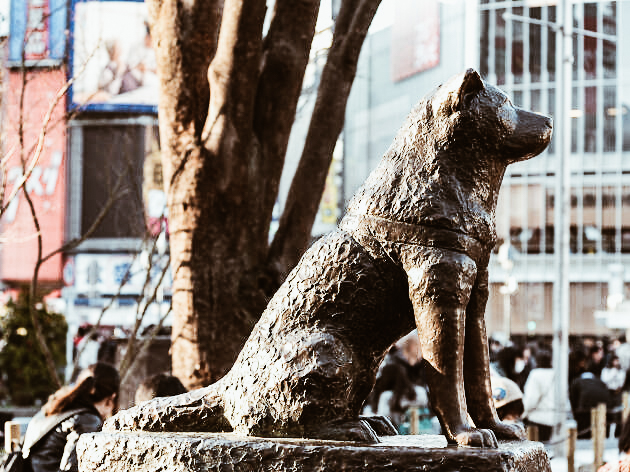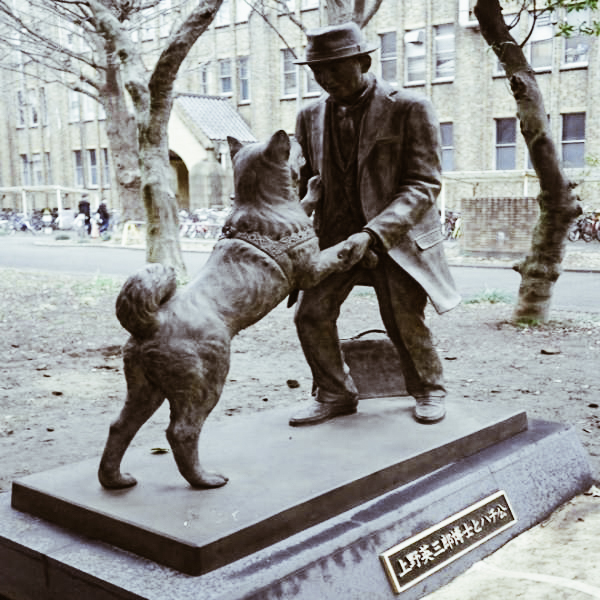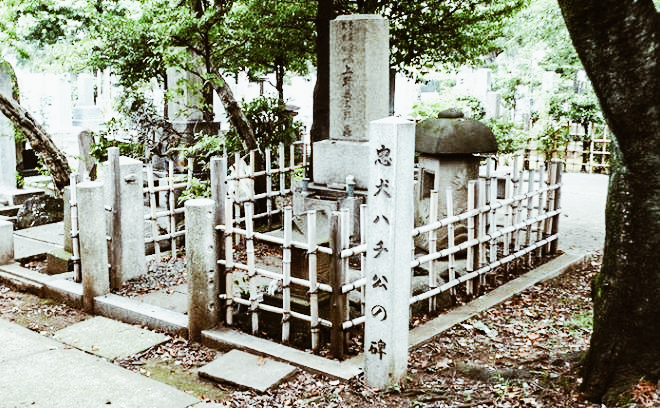Everyone, but really everyone, knows the story of the faithful Hachiko, the dog that in the 30’s moved the hearts of the whole world for his deep fidelity, but not everyone knows some details about this sweet dog whose symbolic statue stands in Shibuya.
10 things you don’t know about Hachiko
Author: Sara

photo credits: lastampa.it
1- The Origins
The beautiful Akita-inu was born in 1923 in Odate in Akita Prefecture (hence the breed name, “Akita dog”) and was purchased by the scientist Hidesaburo Ueno who named him Hachi, “8”. Right in Odate, in front of the station, there is another statue of Hachi a shrine and the Akitainu Hozonkai Museum.

photo credits: keblog.it
2- Love overcomes evil
.
When Ueno died in 1925, Hachi found a new home with the scientist’s former gardener, Kikuzaburo Kobayashi in Tomigaya, not far from Shibuya. Every day the faithful dog went to Shibuya station to wait for the return of Ueno, but for 10 years this “walk” was not always quiet: Hachiko was mistreated and beaten several times by pedestrians, children and people without any humanity. Shameful, isn’t it?

photo credits: greenme.it
3- Hachi becomes Hachiko
.
In 1932, the president of the Nihon Ken Hozonkai, an association for the preservation of Japanese dogs, Hirokichi Saito, learned of Hachi’s history and wrote an article recounting the vicissitudes and mistreatment suffered by this faithful dog, transforming it in a short time into a symbol. It was at this point that the suffix “ko” was added to Hachi’s name to show respect for his devotion and loyalty.

photo credits: hotcorn.com
4- The Honorary Statue
Teru Ando, Saito’s acquaintance, sculpted the famous Hachiko statue (while the dog was still alive!) which was unveiled in 1934. Before this happened several swindlers tried to get money out of him claiming to be the creators of the statue! There is really no limit to human greed…

photo credits: japantravel.com
5- The Merger of the Statues
.
World War II spared nothing, not even the Hachiko statues. The metal with which they were made had to be used “for the good of the war” and so they were melted down.
At the end of the Pacific War Ando’s son, Takeshi, built the current statue in Shibuya. The one at Odate Station was also rebuilt in 1967.

photo credits: animalpedia.it
6- Hachiko and Ueno forever together
.
So far we have always talked about the statues dedicated to the puppy, but there is another, beautiful one that brings together Hachiko and his master. It was built 80 years after Hachiko’s death, when the University of Tokyo decided to pay tribute to the two protagonists of the sad story. Thanks to donations from individuals and companies, over 10 million yen made the reunion between the dog and his master possible. Today the statue stands on the campus of the University of Tokyo, right next to Ueno Park.

photo credits: womanuntamed.com
7- A Cemetery Full of Charm
I guess I’m one of the few people who like to visit cemeteries, and the Aoyama Cemetery, dating back to 1872, is definitely one of the most beautiful: near the Gaienmae and Aoyama Itchome stations, it stretches out like a huge park and is home to many famous people whose tombstones rise up to reveal a unique architecture. Of course Ueno lies right here and next to his grave there is a monument erected immediately after the death of Hachiko in 1935.

photo credits: wikimedia.org
8- Between the macabre and science
.
I would almost call this point disgusting, but if you have the courage (and the stomach) of iron then know that it is possible to observe the internal organs of Hachiko preserved in sample bottles at the museum of the archives of the Faculty of Agriculture of the University of Tokyo, near Ueno Park. Various autopsies performed between 1935 and 2010 had found infestations of parasitic diseases and, finally, cancer, the real cause of Hachi’s death. At the National Museum of Nature and Science there is also a taxidermied Hachiko with the original fur of the dog……

photo credits: timeout.com
9- The Protectors of Tokyo
The statue of samurai Saigo Takamori with his faithful Tsun also stands in Ueno Park. Tsun and Hachiko quickly became a symbol for the Japanese and declared the “protectors of Tokyo and the Japanese economy.”

photo credits: ilgiornale.it
10- Richard Gere as Ueno?
.
I’m sure everyone (or almost everyone) has seen the movie “Hachiko – Your Best Friend” (Original title: “Hachi: A Dog’s Tale”) , but have you stopped to think that this 2009 film is set in the United States? The story is nonetheless heartbreaking and beautiful, but it fails to bring Japanese culture to light in the way that the original 1987 film, “Hachiko Monogatari” does.
Share this:
- Click to share on Facebook (Opens in new window)
- Click to share on Twitter (Opens in new window)
- Click to share on Tumblr (Opens in new window)
- Click to share on Pinterest (Opens in new window)
- Click to share on Telegram (Opens in new window)
- Click to share on WhatsApp (Opens in new window)
- Click to share on Reddit (Opens in new window)
- Click to print (Opens in new window)






